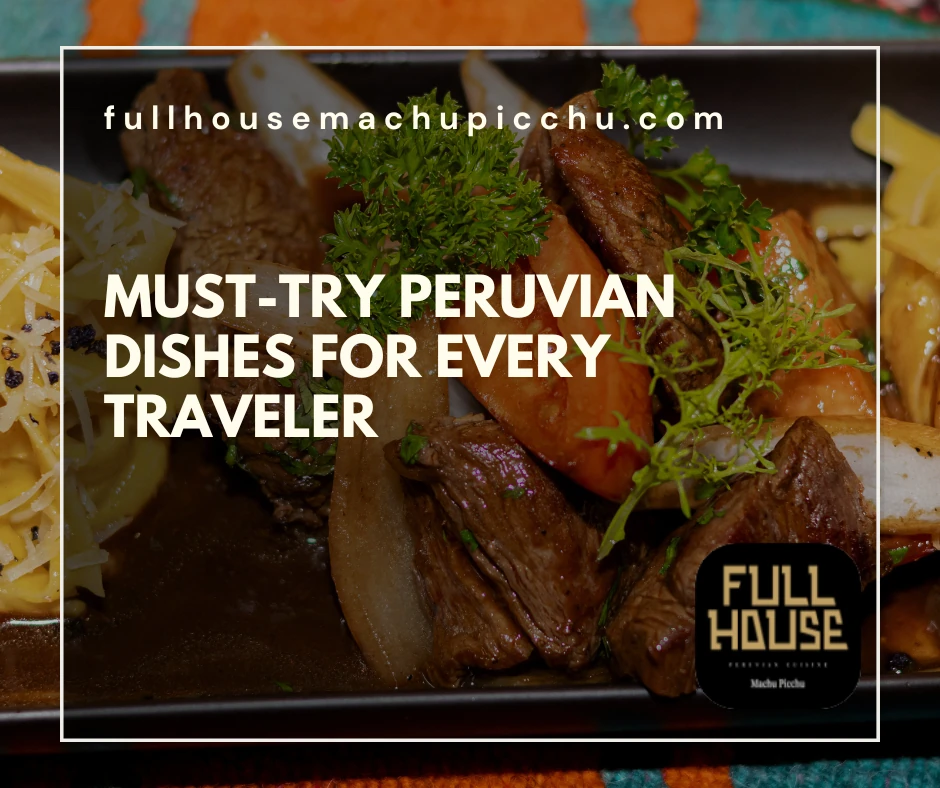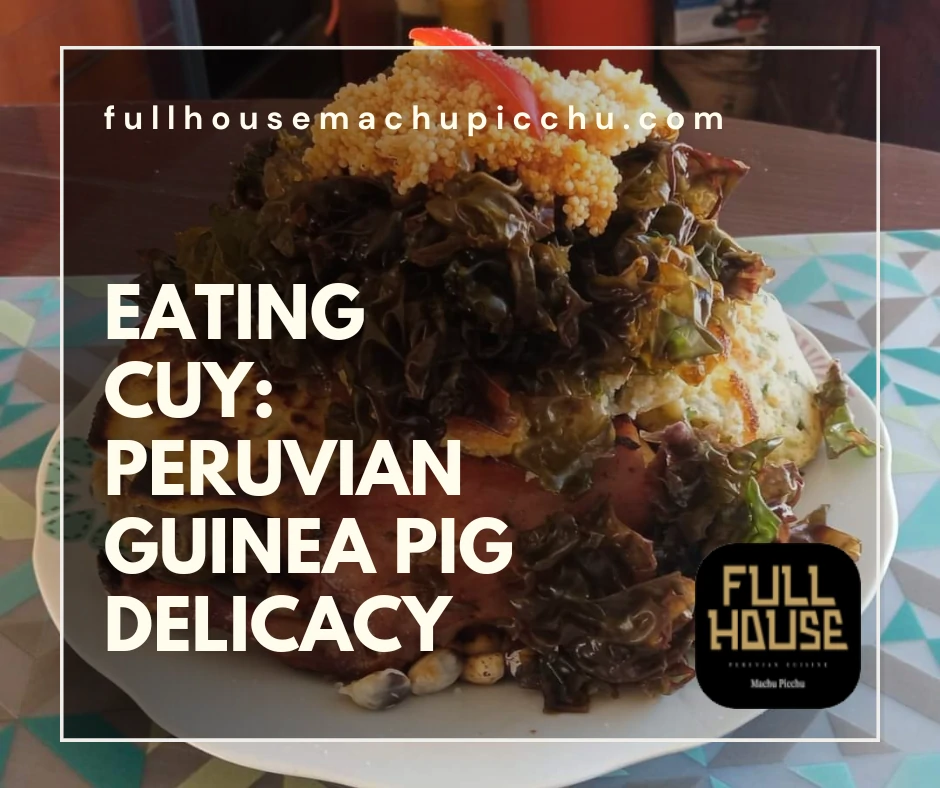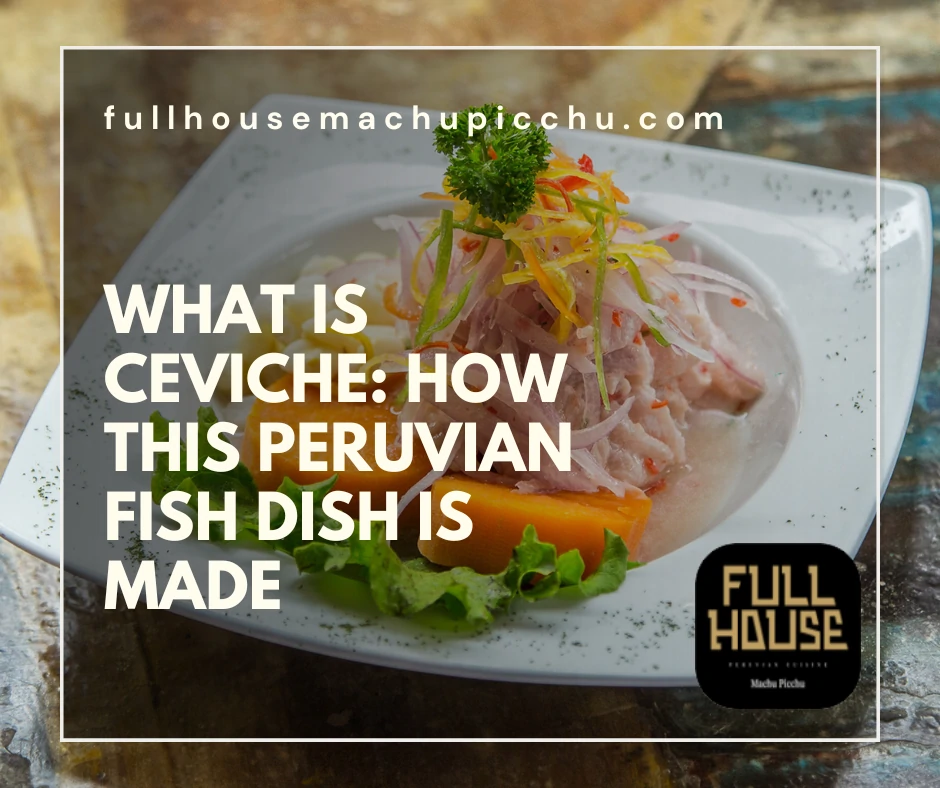Before we dive into specific dishes, it’s essential to understand the diversity that defines Peruvian cuisine. The country’s culinary scene is a melting pot of influences, including indigenous, Spanish, African, and Asian flavors. This fusion has given birth to some of the most unique and delicious creations, many of which are considered must try Peruvian dishes around the world.
Indigenous Roots and Ingredients
Peruvian cuisine owes much of its richness to the indigenous people who have cultivated the land for centuries. Staples like potatoes, corn and quinoa have been part of the diet since ancient times. The use of these ingredients provides a base for many traditional dishes, offering a taste that is both comforting and familiar.
Spanish Influence and Colonial Legacy
The arrival of the Spanish in the 16th century introduced new cooking techniques and ingredients, such as wheat, rice, and various meats. The blending of Spanish culinary traditions with local ingredients created a unique fusion that is central to Peruvian cuisine today. This period also saw the introduction of desserts like alfajores and turrón, which remain popular.
Asian and African Flavors
In the 19th century, waves of Chinese and Japanese immigrants brought their culinary traditions, leading to the creation of “Chifa” and “Nikkei” cuisines. Dishes like Lomo Saltado reflect the Chinese influence, while Tiradito showcases Japanese techniques. African slaves also contributed by introducing spices and cooking methods that have been integrated into beloved dishes.
Ceviche: The Quintessential Peruvian Dish
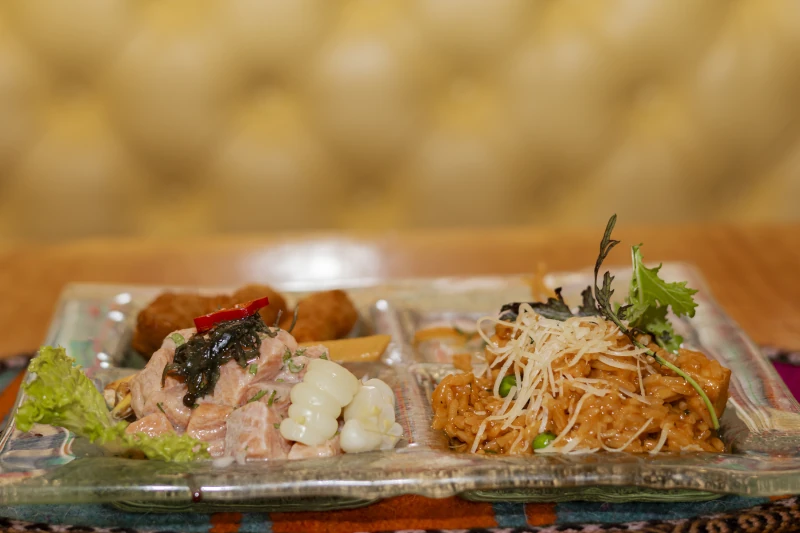
No trip to Peru is complete without trying ceviche. This iconic dish, often touted as the best food in Peru, consists of fresh raw fish marinated in citrus juices, usually lime, and spiced with ají (chili peppers). It is typically accompanied by sliced onions, coriander, and sweet potato. The freshness and tangy taste make it a refreshing choice, especially in the coastal city of Lima.
The Art of Making Ceviche
Creating the perfect ceviche is an art that requires the freshest ingredients. The fish must be of the highest quality, often sourced directly from the Pacific Ocean. The marination process is crucial, as the acidity of the lime “cooks” the fish, infusing it with flavor while maintaining its delicate texture. The balance of flavors is key, with the heat from the ají complementing the coolness of the fish.
Regional Variations of Ceviche
While Lima is famous for its ceviche, different regions of Peru offer their unique twists. In the northern city of Trujillo, ceviche is often served with cancha, a type of toasted corn, and seaweed. In the southern regions, you might find ceviche made with river fish and additional spices. Each variation offers a new perspective on this classic dish, reflecting local tastes and ingredients.
Where to Find the Best Ceviche
If you find yourself in Lima, head to the Miraflores district, where you can savor some of the best ceviche in Peru. Restaurants like La Mar and El Mercado are renowned for their authentic Peruvian food and exceptional ceviche. For a more local experience, visit the traditional cevicherías in Callao, where the dish is prepared with a rustic touch.
Lomo Saltado: A Stir-Fry Sensation
Lomo Saltado is a fusion of Chinese and Peruvian flavors, highlighting Peru’s multicultural culinary scene. This dish combines marinated strips of sirloin with onions, tomatoes, and other ingredients, sautéed in soy sauce, and typically served with rice and French fries. The combination of flavors and textures makes it a standout dish in Peruvian cuisine.
The Origins of Lomo Saltado
The origins of Lomo Saltado can be traced back to the Chinese immigrants who settled in Peru during the late 19th century. Their influence on local cuisine led to the creation of “Chifa,” a blend of Chinese and Peruvian culinary traditions. Lomo Saltado is a perfect example of this fusion, showcasing the adaptability and creativity of Peruvian chefs.
The Perfect Lomo Saltado
Achieving the perfect Lomo Saltado requires skillful balancing of flavors. The beef must be tender and juicy, and the vegetables should retain their crunch. The use of soy sauce adds depth, while the addition of vinegar brings acidity to the dish. The key is in the stir-frying technique, which allows the ingredients to meld together without losing their individual characteristics.
Best Spots to Try Lomo Saltado
In Lima, you can enjoy this dish at places like Tanta and Panchita. For those venturing to Cusco, Full House offers a delightful take on this traditional meal. Each restaurant adds its own flair, whether through the use of local spices or unique presentation, ensuring that each experience is memorable.
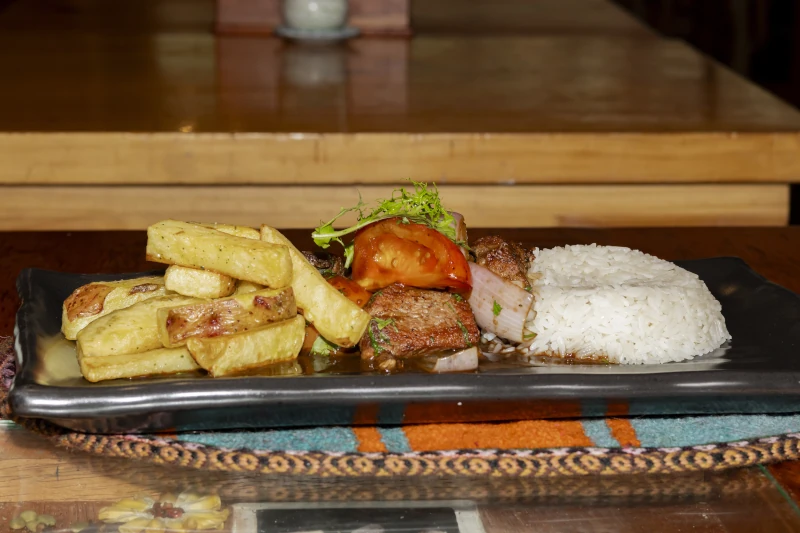
Aji de Gallina: Creamy and Spicy Chicken Stew
Aji de Gallina is a comforting and creamy chicken stew that features shredded chicken in a sauce made from cream, cheese, and ají amarillo (yellow chili peppers). Served with rice and often garnished with olives and boiled eggs, this dish is a staple in Peruvian households.
The History of Aji de Gallina
The history of Aji de Gallina dates back to colonial times, where it was influenced by both Spanish and indigenous cooking methods. The use of ají amarillo, a native Peruvian chili, provides a distinctive flavor and color that sets this dish apart. Over time, it has evolved to include a variety of ingredients, making it a beloved dish across the country.
Making Aji de Gallina at Home
Preparing Aji de Gallina at home is a rewarding experience, as it allows you to appreciate the intricacies of Peruvian cooking. The chicken must be poached to perfection, and the sauce requires careful attention to achieve the right consistency. The addition of nuts or bread can enhance the texture, making it even more satisfying.
Where to Savor Aji de Gallina
Aguas Calientes is a fantastic place to try Aji de Gallina, with Full house offering a cozy ambiance and a delicious rendition of this classic dish. Many local eateries also serve this stew, each with its own take on the recipe, providing a range of experiences for the adventurous eater.
Anticuchos: The Street Food Delight
For those looking to explore Peruvian street food, anticuchos are a must-try. These skewers, typically made from beef heart, are marinated in a rich blend of spices and grilled to perfection. Served with potatoes and a spicy sauce, they are a popular snack among locals and tourists alike.
The Tradition of Anticuchos
Anticuchos have a long history in Peru, dating back to pre-Columbian times. Originally made with llama meat, the dish evolved with the arrival of the Spanish, who introduced beef. The use of beef heart is a nod to the resourcefulness of the indigenous people, who utilized every part of the animal.
The Art of Grilling Anticuchos
Grilling anticuchos is an art form that requires precision and patience. The meat must be marinated for several hours to absorb the flavors, and the grilling process must be timed perfectly to achieve a tender and juicy result. The accompanying sauce, often made with rocoto peppers, adds a fiery kick that complements the smoky taste.
Finding the Best Anticuchos
In Lima, visit the bustling markets or street vendors in the Barranco district to taste some of the best anticuchos around. These skewers are not just a meal; they’re an experience. The lively atmosphere and the aroma of grilling meat make it a memorable culinary adventure.
Rocoto Relleno: Spicy Stuffed Peppers
Originating from the Arequipa region, Rocoto Relleno is a dish that packs a punch. These spicy peppers are stuffed with a mixture of meat, onions, and spices, then topped with cheese and baked. The result is a flavorful and fiery dish that is sure to excite the palate.
The Unique Flavor of Rocoto Peppers
Rocoto peppers are known for their intense heat and distinct flavor. Unlike other chili peppers, they have a thick flesh that holds up well during cooking. This makes them ideal for stuffing, as they retain their shape and offer a satisfying bite. The combination of spice and sweetness sets them apart from other peppers.
Preparing Rocoto Relleno
Preparing Rocoto Relleno is a labor of love that requires attention to detail. The peppers must be carefully hollowed out, and the filling must be seasoned to perfection. Baking the peppers allows the flavors to meld together, creating a dish that is both complex and harmonious. The addition of melted cheese provides a creamy contrast to the spicy filling.
Must-Visit Spots for Rocoto Relleno
Arequipa is the place to indulge in Rocoto Relleno. Head to La Nueva Palomino for an authentic taste of this regional specialty. The city offers various versions of the dish, each reflecting the local culinary traditions and the creativity of the chefs.
Causa: A Layered Potato Delight
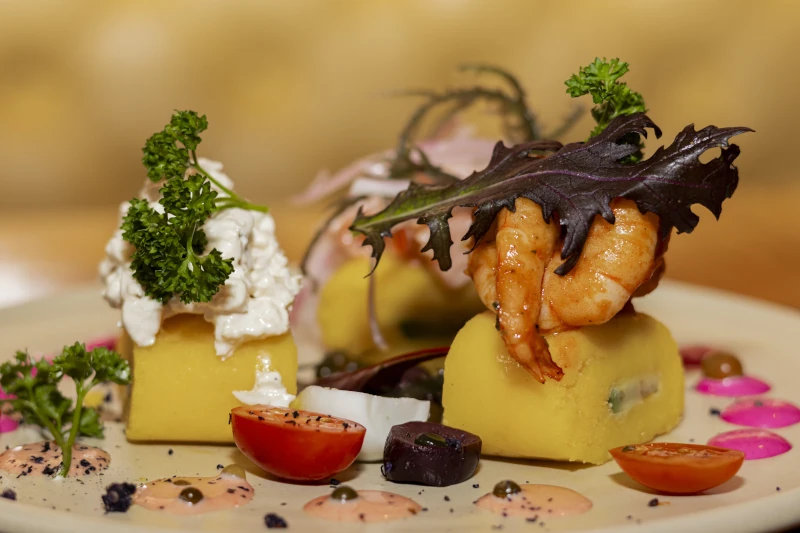
Causa is a unique dish that showcases the versatility of the potato, a staple in Peruvian food. It consists of layers of mashed potatoes seasoned with lime and ají, filled with ingredients like tuna, chicken, or avocado. Served cold, Causa is both a refreshing and satisfying meal.
The Versatility of Potatoes in Peruvian Cuisine
Potatoes are a cornerstone of Peruvian cuisine, with thousands of varieties grown across the country. Their versatility allows for endless culinary possibilities, from simple boiled potatoes to elaborate dishes like Causa. This adaptability is celebrated in Peruvian cooking, where the potato is often the star ingredient.
Creative Variations of Causa
Causa offers endless opportunities for creativity, as it can be customized with various fillings and presentations. Some chefs add layers of seafood for a coastal twist, while others incorporate local vegetables for a fresh take. As one of the must try Peruvian dishes, its presentation is often as impressive as the taste, featuring colorful layers and artistic garnishes.
Where to Try Causa
Lima’s culinary scene offers numerous opportunities to try Causa. Popular spots include Astrid y Gastón and Isolina, where you can enjoy this dish in a variety of creative presentations. Each restaurant brings its own flair to Causa, ensuring a unique dining experience.
Chicha Morada: A Traditional Peruvian Beverage
No exploration of Peruvian cuisine is complete without sampling Chicha Morada}. This traditional drink is made from purple corn, boiled with pineapple, cinnamon, and cloves, then sweetened with sugar and served chilled. It’s a refreshing beverage that perfectly complements the rich flavors of Peruvian dishes.
The Cultural Significance of Chicha Morada
Chicha Morada is more than a drink, it’s a symbol of Peruvian heritage and tradition. Made from purple corn native to the Andes, it reflects the country’s deep agricultural roots. Its blend of spices and fruits highlights the creativity of Peru’s indigenous people, who crafted this flavorful beverage from simple, local ingredients. As a refreshing complement to many must try Peruvian dishes, Chicha Morada is an essential part of the culinary experience.
The Health Benefits of Chicha Morada
In addition to its delightful taste, Chicha Morada is known for its health benefits. Purple corn is rich in antioxidants, which help combat free radicals and support overall health. The inclusion of spices like cinnamon also offers anti-inflammatory properties, making this drink both tasty and nutritious.
Best Places to Sip Chicha Morada
Throughout Peru, you’ll find Chicha Morada in most restaurants and street vendors. It’s a must-try drink that offers a taste of Peru’s culinary heritage. Whether you’re dining in a high-end restaurant or enjoying street food, a glass of Chicha Morada is the perfect accompaniment to your meal.
Is Peru Home to the Best Food in the World?
With its rich mix of flavors and cultural influences, it’s no surprise that Peru is known for having some of the best food in the world. Each dish tells a story, reflecting the country’s vibrant history and diversity. Whether you’re a busy executive or a photographer in search of authentic experiences, Peru’s cuisine will both delight and inspire you. If you want to try all the must try Peruvian dishes in one place, we recommend checking out Full House Restaurant’s menu, it brings them all together under one roof.
The Global Recognition of Peruvian Cuisine
Peruvian cuisine has gained international acclaim, with chefs and food enthusiasts praising its innovation and depth. The country’s top restaurants frequently appear on global lists, showcasing the creativity and skill of Peruvian chefs. This recognition has put Peru on the map as a must-visit destination for food lovers.
The Unforgettable Culinary Journey
Traveling through Peru offers an unforgettable culinary journey, with each region presenting its own specialties and flavors. From the coastal flavors of Lima to the Andean tastes of Cusco, there’s a world of culinary delights waiting to be discovered. The diversity of dishes ensures that every meal is an adventure, offering new tastes and experiences.
Planning Your Culinary Adventure
So, next time you plan a trip to Peru, let your taste buds guide you through this incredible country. Take the time to explore local markets, dine in renowned restaurants, and savor street food. With each bite, you’ll uncover the rich history and culture that make Peruvian cuisine truly exceptional. Happy eating!

